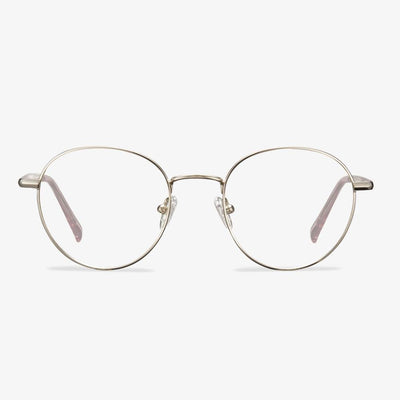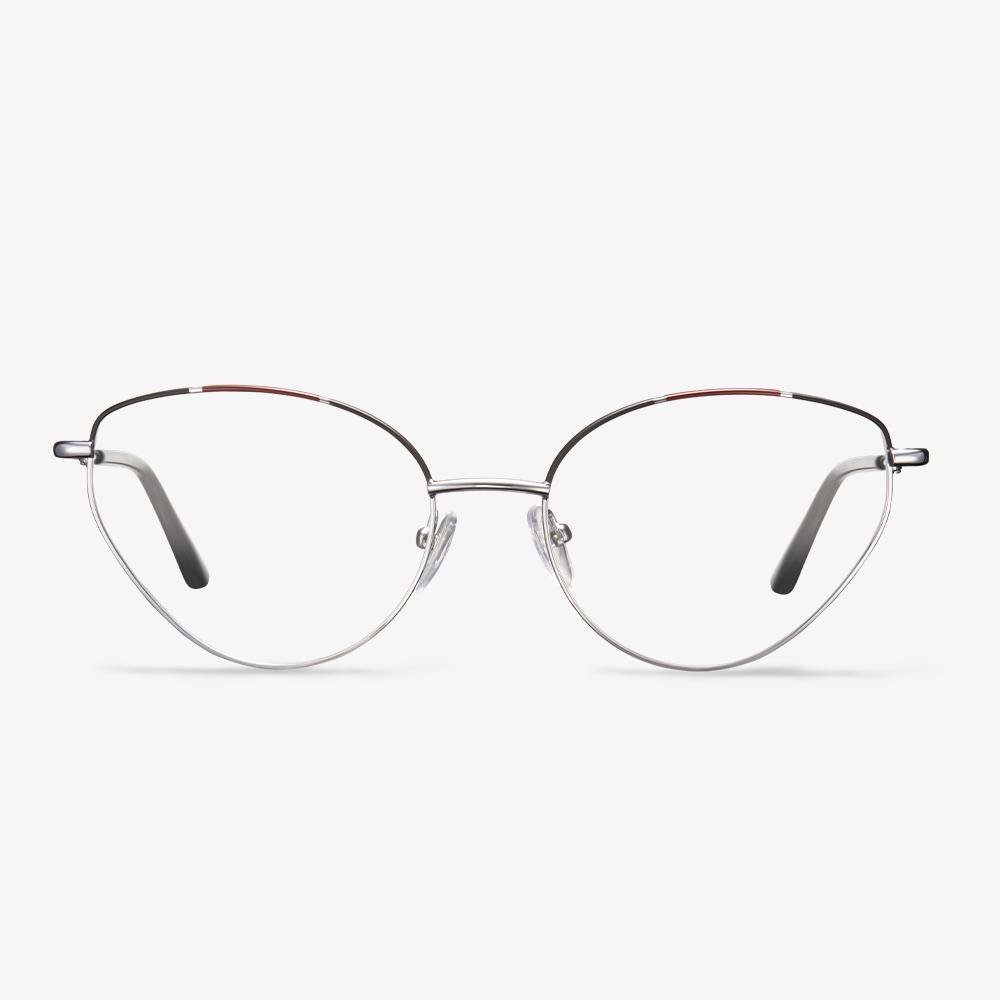Westie Dog Eyeglass Holder
The spirit of Westie is captured by this adorable dog frame, which stands about 4.5 inches tall and can be fitted with glasses, sunglasses, and so on. This dog frame is a great choice for children's frames. It uses high-quality resin designed and manufactured in the UK. Each dog spectacle frame is hand-painted and comes in a gift box.
Colored Clear sunglasses
The glasses style is distinctive, with an exaggerated outer edge and blue clear design. They show youth breath. The small eyebrow on the glasses side that shows faintly lets the whole look more stereoscopic. Relative to other colorless clear sunglasses, color clear glasses convey a strong youth breath. It is all color design that greatly enriched the color part of the overall image.
Eyemart Express
Eyemart Express is founded in 1990. The focus is to get you the right glasses at the right price. Eyemart Express is the only retailer with a lens lab in every store that can produce 90% of its glasses on the same day. There are more than 2,000 frames to choose from, including designer brands and safety glasses. At their online store, you can buy prescription glasses anywhere and have them delivered to your door. You can choose the best glasses at the right price and enjoy same-day service.
The main parts of glasses
1. Spectacle lenses
One of the most important accessories for glasses is spectacle lenses. Due to the increase in myopia patients, the demand for spectacle lenses is also very large, but the prices of spectacles on the market are also uneven. To know whether the spectacle lens is good or not, you can't just look at the price of the product, but learn more about the value of the lens itself. For example, the resin lens is lighter and suitable for patients who wear it for a long time. The quality of the optical glass lens is better, and it is not easy to break, suitable for some elderly people.
The quality of spectacle lenses is also a key consideration. The market generally classifies lenses based on their structure, materials, and usefulness. The information on spectacle lenses is mostly chemical substances. It is very beneficial for us to select some good-quality lens materials. It is not only necessary to consider the function of the lens, but also to consider whether the lens material is harmful to the human body. Generally, the crystal stone materials are very safe and reliable, and we can choose carefully.
2. Spectacle frame
Another important figure in eyeglasses accessories is the frame. For those who like lightweight glasses, it is more appropriate to choose ultra-light frames or half frames. However, the frame must have durable and play a good role in maintaining the lens, otherwise, it will lose the meaning of the frame. Of course, the temples are also a part of the frame. There are also nose pads for glasses accessories. Many people have more requirements for nose pads. Generally, they choose soft ones that are not easy to press on the bridge of the nose.
The fabric of eyeglasses cloth
Ordinary fabric: They are only applicable to the surface that has been cleaned.Because the ordinary fabric has no space to accommodate dirt, the surface of the cloth will be very dirty, and difficult to wash clean.
Microfiber fabrics: They are used wet to emulsify dirt and oil, and the microfiber is easier to wipe off. It is highly absorbent, making it very quick to clean the spilled liquid.
Fine fiber double velvet fabric: It feels soft, gentle, with the plump texture, but more single velvet.
Suede fabric: The feel and appearance are quite like natural suede, fine and smooth, soft and plump, used to wipe glasses. It will be clean and won't scratch the lens.
The design evolution of progressive lenses
Spherical and aspheric designs
The design of the front surface of the far-use area of the early progressive lens is similar to that of the ordinary spherical single vision lenses, so it is called a spherical progressive lens. Since 1974, the front surface of the far-use region of the lens is designed to be aspheric by designers, which not only reduces the peripheral aberration but makes the lens thinner, lighter, and less powerful.
Hard and soft design
For hard design, the channel is short, and the gradient is large. The near-use area position is high. The effective visual area of remote and near-use areas was larger. Peripheral astigmatism is relatively concentrated. Because surrounding astigmatism increases rapidly and the distribution is dense, the curve effect is more obvious. The gradient area is narrow. It is more difficult and takes longer for wearers to adapt.
Lenses with soft designs have slower gradients, longer gradients, and wider gradients. The angle of rotation of the eye from the far area to the near area is greater. It's easier to get used to. Compared with the hard design, the effective visual area of the far and near use areas is smaller, and the location of the near use area is lower.
Single, diverse, and individualized design
Initially, the progressive lenses used a single design, in which each basic curve was scaled equally and a luminosity combination was added within the range of its semi-finished lens blanks. The steepest base curve uses the same lens design as the flattest base curve. Lenses designers quickly realized that the overall performance of the lens could be improved by microcustomizing the lens design, leading to progressive lenses with multiple designs. This kind of design is called diverse design. By the mid-1990s, there was the emergence of individualized lens designs. In addition to using different gradients, these first individualized lens designs used steeper baseline curves with a slightly larger approach area to compensate for increased magnification and reduced field of view.
Symmetrical and asymmetric design
There is no difference between the left and right eyes in the symmetrical design of progressive lenses. As the eyes turn inward when they see near objects, the gradual gradient area gradually tilts to the nasal side from top to bottom, so the left/right progressive lenses should be rotated clockwise/counterclockwise respectively during processing. An asymptotic lens with left and right eye divisions is called an asymmetric design. The gradient is gradually and moderately inclined to the nasal side from top to bottom. The refractive force, astigmatism, and vertical prism of the two sides of the left and right gradient of the asymmetric design lenses are basically similar. At the same time, considering the characteristics of eye movement parameters in binocular vision, the peripheral aberrations of the corresponding positions of the left and right lenses were appropriately balanced to improve the visual effect of the wearer.
What is a photochromic lens?
Photochromic lenses are lenses that become dark when exposed to a particular wavelength of light (usually ultraviolet light), but return to their original transmittance and become clear when no longer illuminated by the light source. Photochromic lenses can be made of glass or resin. The discoloration effect is caused by silver chloride or other halides added to the lens, which are transparent to visible light when not irradiated by ultraviolet light. When irradiated by ultraviolet light, chemical reactions will occur, which will absorb part of the visible light and make the lens show dark. The chemical reaction is reversible, so the lens returns to its original transparent state when it is no longer exposed to UV light.


















































